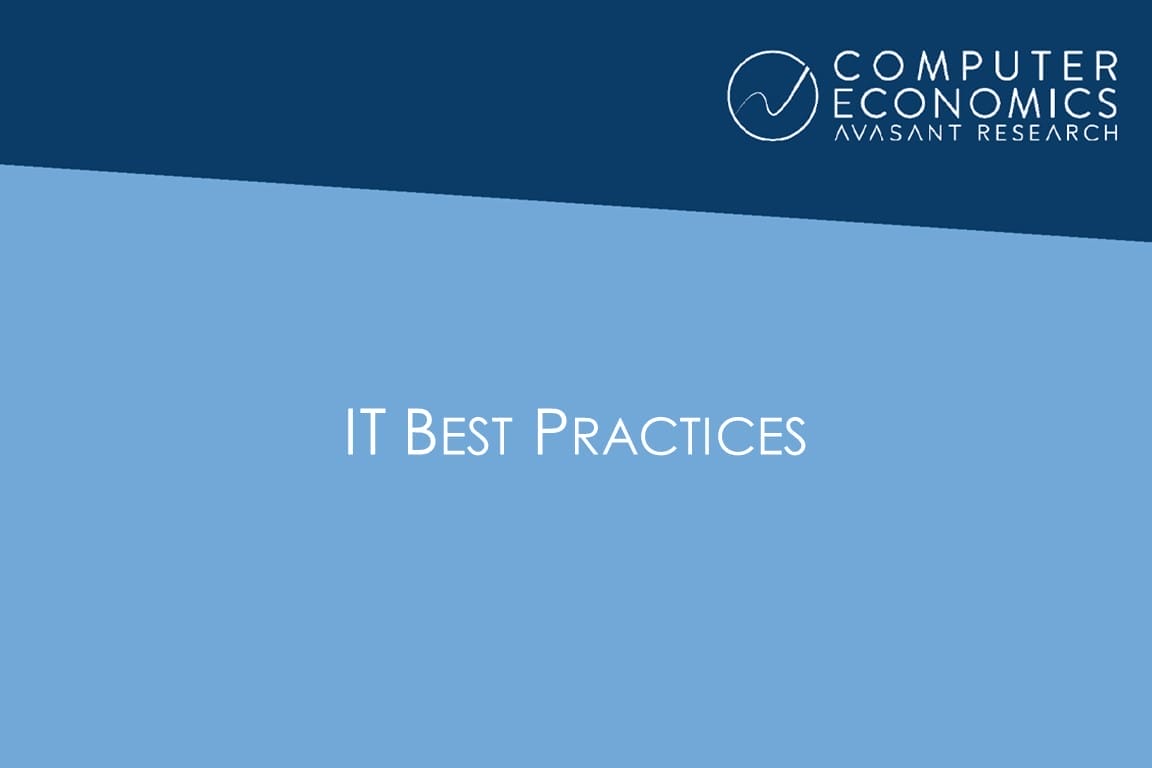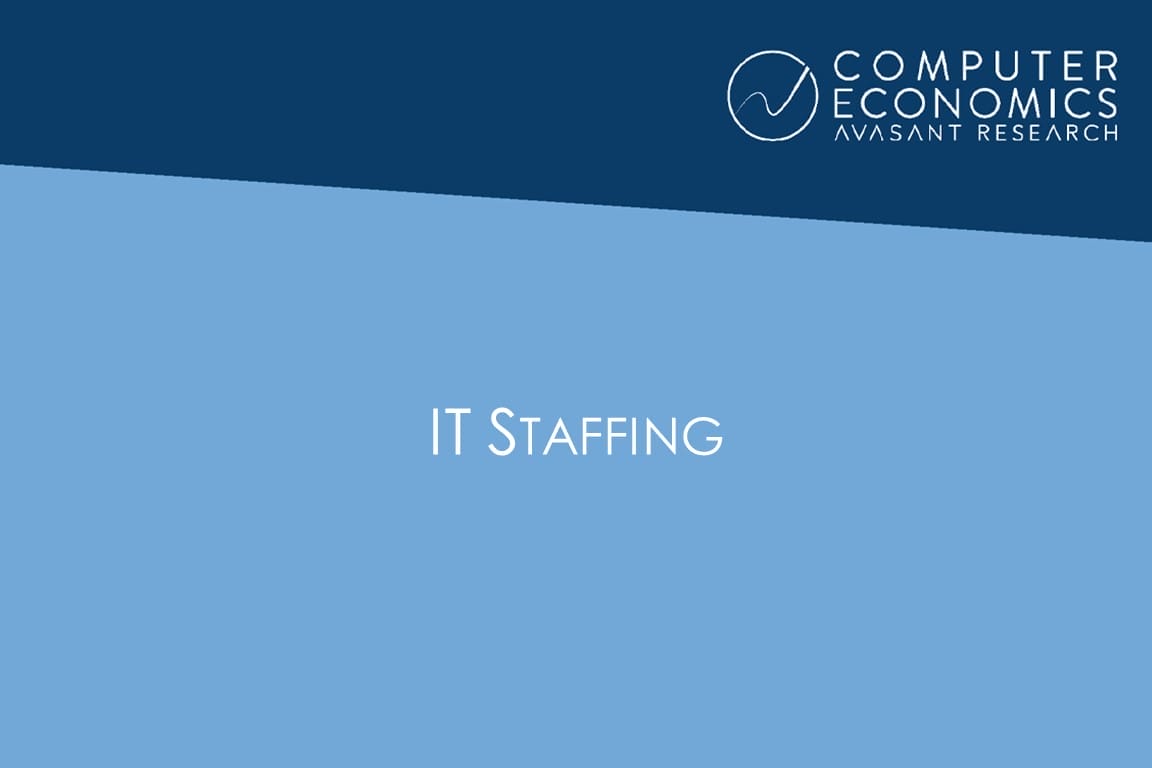Reports
Showing 3761–3776 of 3794 results
-
![Online Payment Systems Are Essential for E-Commerce Success (Jun 2001) Technology Trends - Online Payment Systems Are Essential for E-Commerce Success (Jun 2001)]()
Online Payment Systems Are Essential for E-Commerce Success (Jun 2001)
Website buyers in the US spent over $26 billion during 2000. Computer Economics anticipates that purchases will grow to $36 billion in 2001, and that amount will almost double by 2004. Clearly, there is room for significant expansion of sales in e-commerce. The payment method that e-merchants offer will become one of the keys for success in this market.
June, 2001
-
![2001 Information Systems and E-Business Spending IT Spending Benchmarks - 2001 Information Systems and E-Business Spending]()
2001 Information Systems and E-Business Spending
2001 Information Systems and E-Business Spending
June, 2001
-
![Information Technology Intensity Index: 1998-2001 IT Spending Benchmarks - Information Technology Intensity Index: 1998-2001]()
Information Technology Intensity Index: 1998-2001
The Information Technology Intensity Index is a proprietary index established by Computer Economics to illustrate the relative importance of information technology among industry sectors and for individual organizations within a sector.
May, 2001
-
![E-Business Intensity Index: 1998-2001 (May 2001) IT Spending Benchmarks - E-Business Intensity Index: 1998-2001 (May 2001)]()
E-Business Intensity Index: 1998-2001 (May 2001)
Computer Economics has conducted annual studies of e-business and information technology spending and deployment trends since 1990. The E-Business Intensity Index is a proprietary index established by Computer Economics to illustrate the relative importance of e-business among industry sectors and for individual organizations within a sector.
May, 2001
-
![New Storage Options Increase Challenges Technology Trends - New Storage Options Increase Challenges]()
New Storage Options Increase Challenges
Network-attached storage (NAS) and storage area networks (SAN) can readily solve many of the management problems associated with enterprise storage. In contrast to traditional server hosted and SCSI array storage, these approaches offer reduced administration costs and flexibility in storage design and allocation, along with an easy route for expansion.
May, 2001
-
![Perils and Profits Line the B2B Path (April 2001) IT Best Practices - Perils and Profits Line the B2B Path (April 2001)]()
Perils and Profits Line the B2B Path (April 2001)
The reality of business-to-business (B2B) commerce is that purchasers seldom achieve a discount better than 5 percent more than they could have gained through negotiating in the old brick-and-mortar world. Many times the savings from B2B transactions are not even that good. This lack of savings from online trading helps explain the fact that purchasers have been slow coming to B2B and that most agreements they had with their traditional suppliers remain in place. Clearly B2B merchants will have to do better to wean buyers from their usual way of doing business.
April, 2001
-
![The Potential of Bluetooth Wireless Technology (Mar 2001) Technology Trends - The Potential of Bluetooth Wireless Technology (Mar 2001)]()
The Potential of Bluetooth Wireless Technology (Mar 2001)
By the end of 2001, new devices will permit voice and data wireless links among cell phones, PDAs, laptops, and printers to exchange data at up to 1 Mbps. The emerging Bluetooth technology will be the basis for these Wireless Personal Area Networks (WPAN) among mobile devices located within 10 meters of each other. This report forecasts shipments and revenue from Bluetooth-enabled devices for 2001 through 2005.
March, 2001
-
![About the Computer Economics InfoTechMarks (Feb 2001) IT Spending Benchmarks - About the Computer Economics InfoTechMarks (Feb 2001)]()
About the Computer Economics InfoTechMarks (Feb 2001)
The Computer Economics proprietary InfoTechMark program is designed to improve IT benchmarking, competitive analysis, and planning processes. The five level InfoTechMarking process provides IT executives with tactical and strategic measures of IT performance.
February, 2001
-
![Central IS Budget Allocations by Organization Revenue TriMark - 1998 to 2000 (Feb 2001) IT Spending Benchmarks - Central IS Budget Allocations by Organization Revenue TriMark - 1998 to 2000 (Feb 2001)]()
Central IS Budget Allocations by Organization Revenue TriMark – 1998 to 2000 (Feb 2001)
The IS Budget Allocations TriMark compares the average spending in major budget categories for the years from 1998 to 2000. The IS Budget Allocations TriMark process is designed to provide IT executives with a strategic comparison of budget allocations over an entire decade of IT spending.
February, 2001
-
![Central IS Budgets as a Percentage of Revenue InfoTechMark: TriMark 1998 to 2000 and DeciMark 1991 to 2000 (Feb 2001) IT Spending Benchmarks - Central IS Budgets as a Percentage of Revenue InfoTechMark: TriMark 1998 to 2000 and DeciMark 1991 to 2000 (Feb 2001)]()
Central IS Budgets as a Percentage of Revenue InfoTechMark: TriMark 1998 to 2000 and DeciMark 1991 to 2000 (Feb 2001)
The Central IS Budgets as a Percentage of Revenue InfoTechMark shows the relationship of the IS budget to the organization's revenue. For government organizations, the IS budget is compared to total spending for operations. Results are presented for each sector or by organization revenue. The lower quartile (25th percentile) presents the lowest 25 percent of spending by all of the organizations, where 25 percent spent less than that amount. The median (50th percentile) is the level at which half of the organizations spent less and the remainder spent more. The upper quartile (75th percentile) presents the highest 25 percent of spending by all of the organizations, where 25 percent spent more than that amount.
February, 2001
-
![Central IS Spending Per Employee TriMark-1998 to 2000 and DeciMark-1991 to 2000 (Feb 2001) IT Spending Benchmarks - Central IS Spending Per Employee TriMark-1998 to 2000 and DeciMark-1991 to 2000 (Feb 2001)]()
Central IS Spending Per Employee TriMark-1998 to 2000 and DeciMark-1991 to 2000 (Feb 2001)
The Central IS Spending Per Employee InfoTechMark provides a measure of IS productivity for each sector or organization size. Results are provided for the lower quartile, median, and upper quartile. The figure includes the lower quartile, median, and upper quartile amounts of spending per employee. The lower quartile (25th percentile) presents the lowest 25 percent of spending by all of the organizations, where 25 percent spent less than that amount. The median (50th percentile) is the level at which half of the organizations spent less and the remainder spent more. The upper quartile (75th percentile) presents the highest 25 percent of spending by all of the organizations, where 25 percent spent more than that amount.
February, 2001
-
![Workers Supported Per IS Employee DeciMark - 1991 to 2000 (Feb 2001) IT Spending Benchmarks - Workers Supported Per IS Employee DeciMark - 1991 to 2000 (Feb 2001)]()
Workers Supported Per IS Employee DeciMark – 1991 to 2000 (Feb 2001)
Workers Supported Per IS Employee DeciMark shows another measure of IS productivity. The lower quartile, median, and upper quartile are presented. The lower quartile (25th percentile) presents the lowest 25 percent of workers supported in all of the organizations, where 25 percent supported less than that amount. The median (50th percentile) is the level at which half of the organizations supported less and the remainder supported more. The upper quartile (75th percentile) presents the highest 25 percent of workers supported in all of the organizations, where 25 percent supported more than that amount. Results are presented for industry sector and by organization revenue for the period of 1991 to 2000.
February, 2001
-
![Workers Supported Per IS Employee TriMark - 1998 to 2000 (Feb 2001) IT Spending Benchmarks - Workers Supported Per IS Employee TriMark - 1998 to 2000 (Feb 2001)]()
Workers Supported Per IS Employee TriMark – 1998 to 2000 (Feb 2001)
Workers Supported Per IS Employee TriMark shows another measure of IS productivity. The lower quartile, median, and upper quartile are presented. The lower quartile (25th percentile) presents the lowest 25 percent of workers supported in all of the organizations, where 25 percent supported less than that amount. The median (50th percentile) is the level at which half of the organizations supported less and the remainder supported more. The upper quartile (75th percentile) presents the highest 25 percent of workers supported in all of the organizations, where 25 percent supported more than that amount. Results are presented for industry sector and by organization size for the period of 1998 to 2000.
February, 2001
-
![IS Budget Changes InfoTechMark: TriMark 1998 to 2000 and DeciMark 1991 to 2000 (Feb 2001) IT Spending Benchmarks - IS Budget Changes InfoTechMark: TriMark 1998 to 2000 and DeciMark 1991 to 2000 (Feb 2001)]()
IS Budget Changes InfoTechMark: TriMark 1998 to 2000 and DeciMark 1991 to 2000 (Feb 2001)
The IS Budget Changes InfoTechMark shows the direction of budget trends for each sector or by organization revenue. This benchmark is useful to IS managers or staff seeking the direction IS budgets are taking within their sector. The IS Budget Changes TriMark shows average budget changes for 1998 to 2000. The IS Budget Changes DeciMark shows average budget changes for 1991 to 2000.
February, 2001
-
![Central IS Budget Allocations DeciMark - 1991 to 2000 (Feb 2001) IT Spending Benchmarks - Central IS Budget Allocations DeciMark - 1991 to 2000 (Feb 2001)]()
Central IS Budget Allocations DeciMark – 1991 to 2000 (Feb 2001)
The IS Budget Allocations DeciMark compares the average spending in major budget categories for the years from 1991 to 2000. The IS Budget Allocations DeciMark process is designed to provide IT executives with a strategic comparison of budget allocations over an entire decade of IT spending.
February, 2001
-
![IS Staffing Trends DeciMark - 1991 to 2000 (Feb 2001) IT Staffing - IS Staffing Trends DeciMark - 1991 to 2000 (Feb 2001)]()
IS Staffing Trends DeciMark – 1991 to 2000 (Feb 2001)
The IS Staffing Trends DeciMark provides an overview of staff changes for each sector or by organization revenue. The differences between staff increases and decreases provide an indicator of whether the sector is experiencing staffing shortages or excesses. Results are presented for the period of 1991 to 2000.
February, 2001





